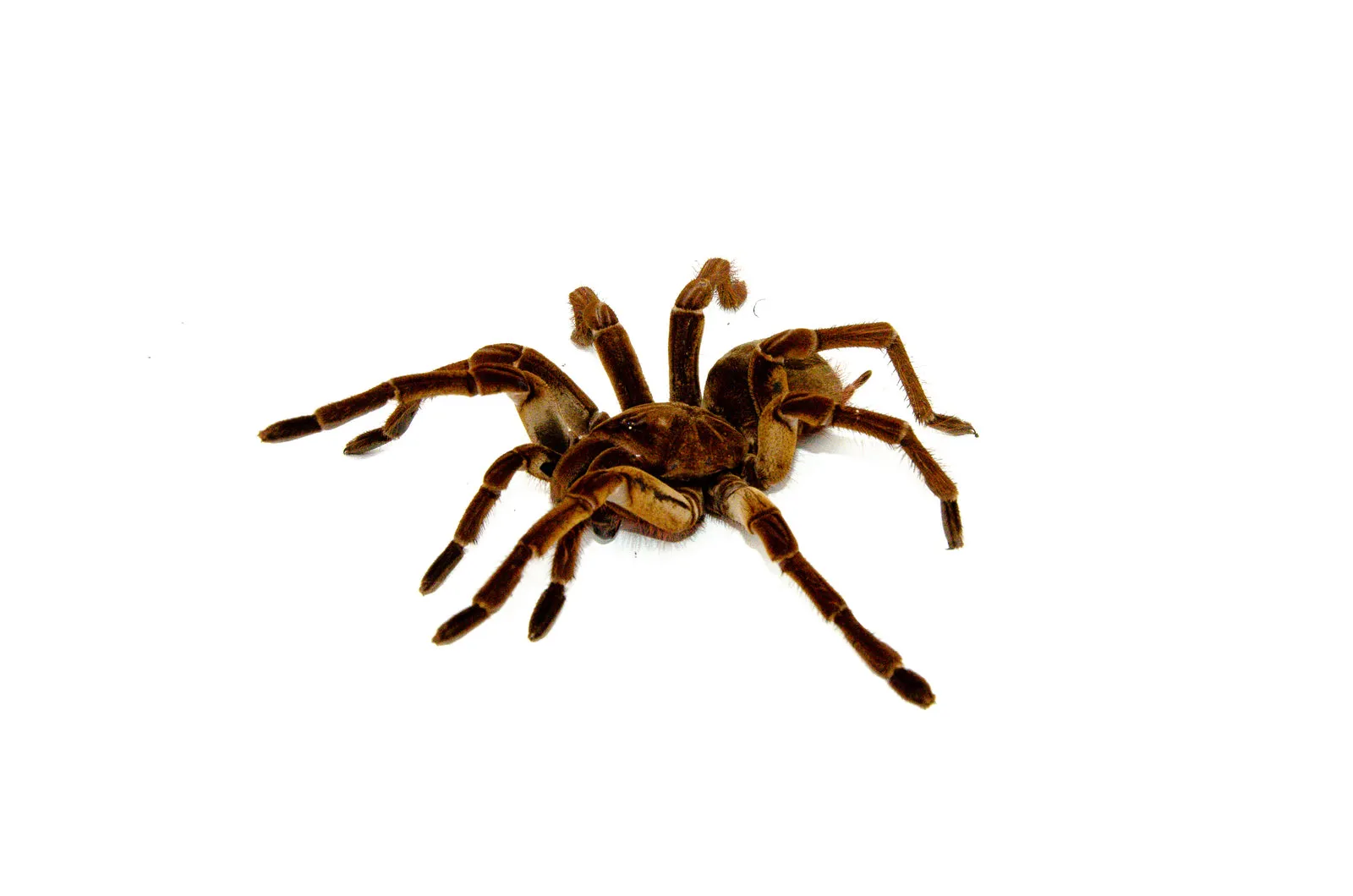Understanding Goliath Bird Eater Tarantula Molting
Molting is a crucial process for the Goliath Bird Eater tarantula, a fascinating and imposing arachnid. This natural phenomenon is how the tarantula grows and sheds its old exoskeleton, revealing a new, larger one underneath. It’s a time of vulnerability, growth, and renewal for these incredible creatures. Understanding the intricacies of molting is vital for any keeper of a Goliath Bird Eater, ensuring their pet’s health and well-being throughout this critical phase. The entire process, from the initial signs to the final hardening of the new exoskeleton, is a testament to the resilience and adaptability of these remarkable animals. This guide will provide a comprehensive overview of everything you need to know about Goliath Bird Eater tarantula molting.
What is Molting
Molting, or ecdysis, is the process by which a tarantula sheds its exoskeleton. The exoskeleton, made of chitin, doesn’t grow. As the tarantula grows, it must shed this outer layer to reveal a larger, more accommodating one beneath. This is a complex process, involving the creation of a new exoskeleton underneath the old one, followed by the shedding of the old one. Molting allows the tarantula to grow larger, regenerate lost limbs, and remove parasites. It’s a periodic event, with frequency depending on the age of the tarantula. Younger tarantulas molt more frequently than older ones. This process is essential for the tarantula’s survival and overall health.
The Molting Process
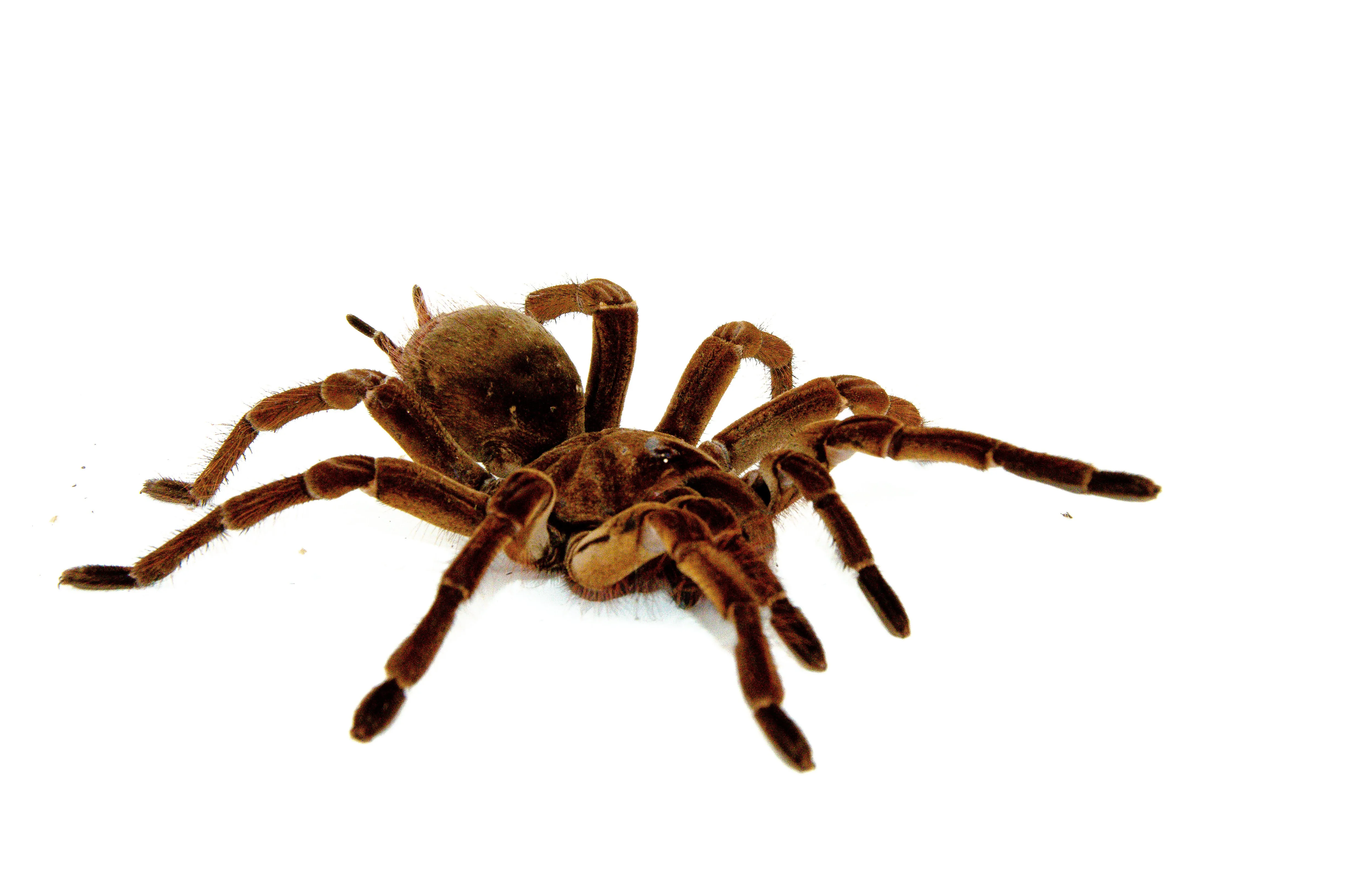
The molting process is multifaceted. It starts with the formation of a new, soft exoskeleton underneath the old one. The tarantula then detaches itself from the old exoskeleton, and enzymes are released to aid in the separation. During the molt, the tarantula absorbs water, causing its body to swell, which helps to split the old exoskeleton. The tarantula then wriggles out of the old shell, a process that can take anywhere from a few minutes to several hours. After the molt, the new exoskeleton is soft and vulnerable, gradually hardening over several days or weeks. During this period, the tarantula is highly susceptible to injury.
Pre-Molting Signs
Recognizing the signs of an impending molt is crucial for providing the right care for your Goliath Bird Eater. Several indicators can help you anticipate this process. The better you are at recognizing these signs, the better you can prepare and ensure the tarantula is safe and secure. It is also very important to avoid disturbing the tarantula when it is molting, so recognizing these signs helps you take the necessary precautions. The following are some of the most common and easily recognizable signs that your Goliath Bird Eater is about to molt.
Changes in Behavior
One of the earliest signs of molting is a change in the tarantula’s behavior. It might become less active, spending more time in its hide or burrow. The tarantula may also become more skittish or irritable, easily startled by any disturbance. Some tarantulas will seal themselves into their burrow, web over the entrance, and become completely invisible to the outside world. If you notice these behavioral changes, it’s a good indication that a molt is on the horizon. Always be patient and avoid unnecessary handling or disruption during this time, to avoid unnecessary stress and damage.
Color Changes

As the molt approaches, the tarantula’s coloration may change. The colors might appear duller, and the overall appearance of the tarantula may seem less vibrant. This is because the new exoskeleton is forming beneath the old one. This process can affect the appearance. The abdomen of the tarantula might appear darker or more translucent. The tarantula may look a bit ‘plump’ before molting. These color changes are a natural part of the process, and once the molt is complete, the tarantula’s colors will return to their usual vibrancy. Be aware of any color changes that could indicate a health problem, and monitor accordingly.
Loss of Appetite
A significant indication that your Goliath Bird Eater is preparing to molt is a loss of appetite. The tarantula will likely refuse food, sometimes for several weeks before the molt. This is because the molting process requires a lot of energy, and the tarantula’s body is preparing for the task ahead. It’s important not to force-feed the tarantula during this time. Offering food is fine, but if it is refused, remove the food. This will ensure that the food doesn’t attract pests to the enclosure. Provide fresh water, but otherwise, let the tarantula be. This is a natural process that the tarantula knows best how to handle.
Preparing for the Molt
Proper preparation can significantly improve the chances of a successful molt. Creating the right environment is essential. This involves maintaining proper humidity and temperature levels, and providing a safe space where the tarantula can molt undisturbed. Anticipating the needs of your Goliath Bird Eater during this critical time will greatly contribute to its well-being. Take the following steps to ensure the tarantula is in the best possible condition for a safe and successful molt, providing peace of mind for both you and your pet. The environment should be as stress-free as possible.
Creating the Right Environment
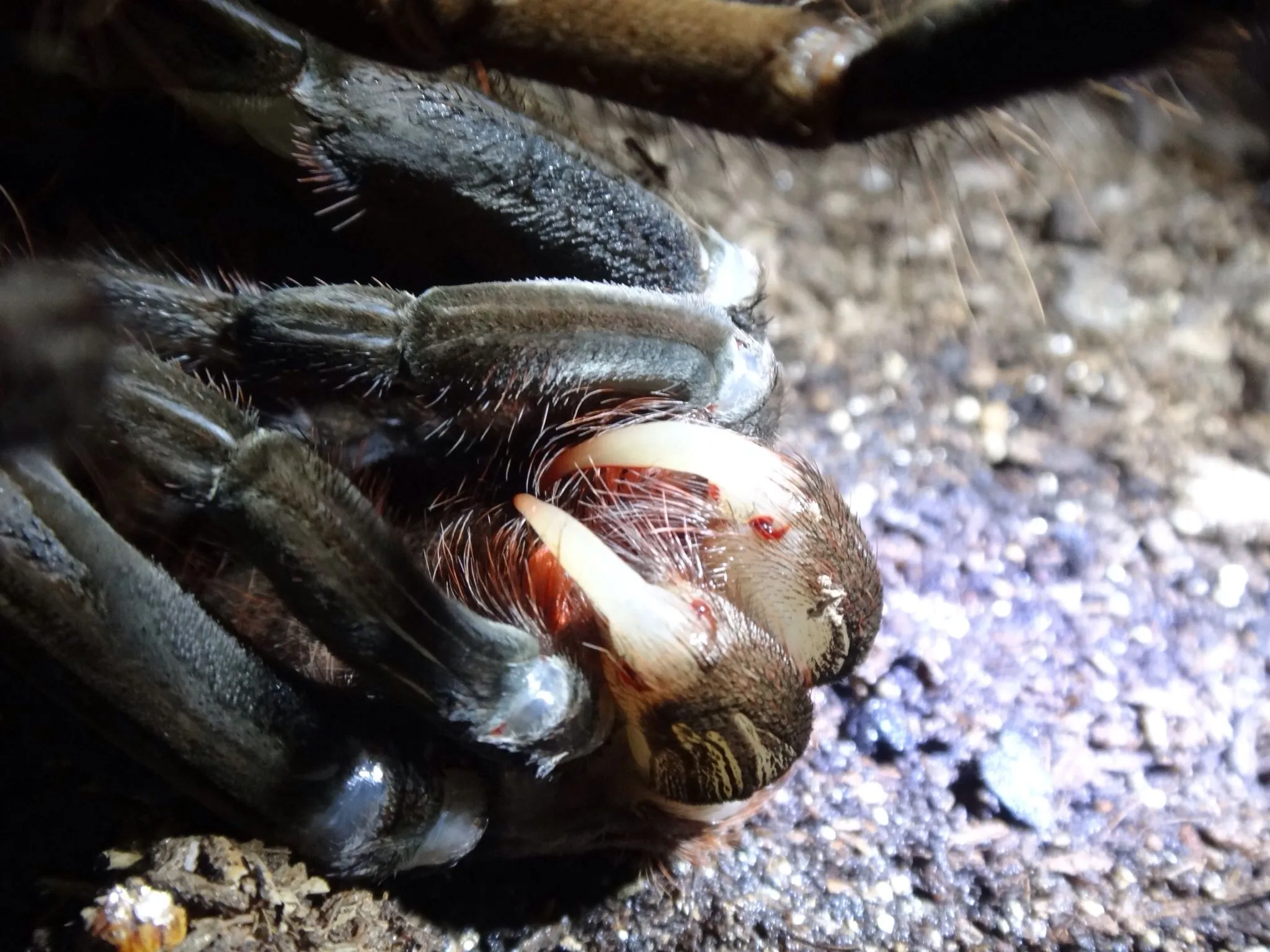
The enclosure should be set up to support the molting process. This includes providing a suitable substrate for the tarantula to burrow or position itself, and ensuring the correct environmental conditions. The substrate should be deep enough for burrowing species. Ensure the enclosure is free from potential hazards, such as sharp objects. Now is the time to make sure the tarantula has everything it needs, before the molt actually starts, so the Goliath Bird Eater feels as safe as possible. The environment is everything during this process.
Maintaining Humidity
Humidity is very important. Proper humidity levels aid in the molting process by preventing the old exoskeleton from drying out and making it easier for the tarantula to shed. Use a hygrometer to monitor the humidity, and adjust as needed. Misting the enclosure regularly, or providing a water dish, can help maintain the required humidity. Ensure the enclosure has adequate ventilation to prevent the buildup of mold. The correct humidity is critical. This is something that is going to vary depending on where you live, but the correct environment is going to increase your chance of a good molt.
Temperature Control
Temperature also plays a crucial role in the molting process. A slightly elevated temperature can help speed up the process. Maintain a stable temperature range suitable for Goliath Bird Eaters, typically between 75-85°F (24-29°C). Use a thermometer to monitor the temperature and ensure it remains within the ideal range. Avoid sudden temperature fluctuations, as they can stress the tarantula. Stable conditions will help the molting process go as smoothly as possible. Use a heat lamp or mat, but make sure it is not too close to the enclosure. Proper temperature helps the tarantula feel safe and secure.
Providing a Safe Space
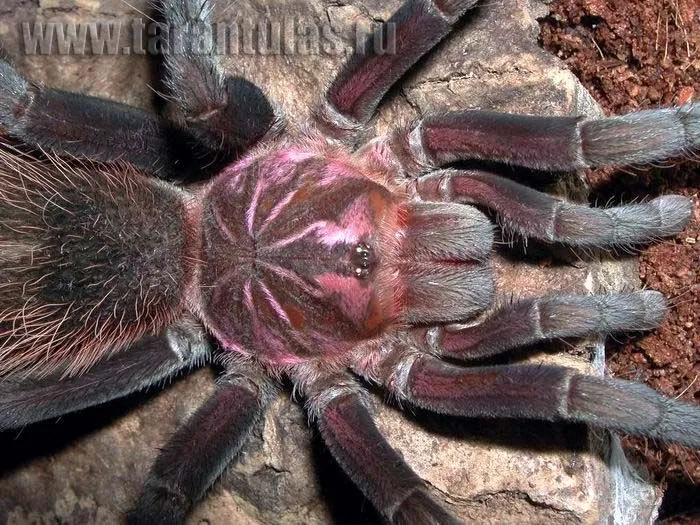
Ensure the enclosure is free from disturbances. Avoid handling the tarantula or moving the enclosure during the molt. Provide plenty of substrate for burrowing species to create a secure space for molting. Ensure there are no potential hazards, such as sharp decorations. A quiet, secluded environment minimizes stress and allows the tarantula to molt undisturbed. This is crucial for a successful molt, as any disruption can be detrimental. Provide a hiding place, such as a hide or a thick layer of substrate, to give your tarantula a sense of security. These precautions contribute to a successful molting experience.
The Molting Process Itself
Witnessing a Goliath Bird Eater molt is a fascinating experience, however, it is also a very vulnerable moment. Understanding the stages of the process can help you provide the best possible care and know what to expect. Avoid any unnecessary disturbances during this time. The key is to observe from a distance and let nature take its course. Once the process is complete, you can then resume normal care. Be patient and observe the following steps from the outside.
Turning on the Back
The tarantula will typically turn onto its back, which is the beginning of the molting process. This position makes it easier for the tarantula to shed its old exoskeleton. The tarantula may remain in this position for several hours. During this time, the old exoskeleton begins to split, usually along the carapace. You can see the new exoskeleton developing underneath. This position can be very stressful, so providing a safe and secure environment will go a long way in alleviating the stress. Avoid the temptation to interfere, as it will do more harm than good.
Extracting from the Old Exoskeleton
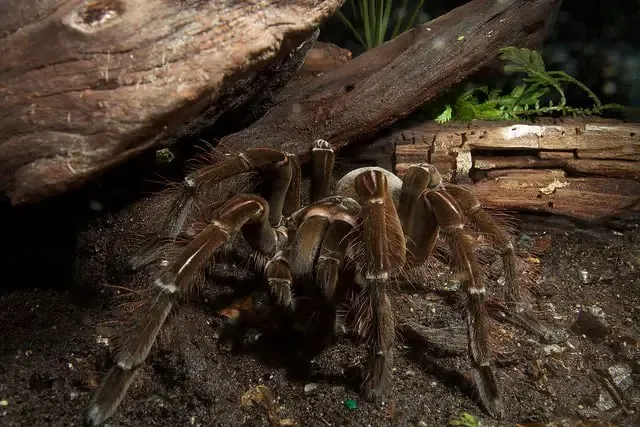
The tarantula will then begin to wriggle out of the old exoskeleton. This is often a slow and arduous process, with the tarantula using its legs and pedipalps to extract itself. This can take several hours, depending on the size and age of the tarantula. Once the tarantula has completely emerged, it will be soft and vulnerable. The new exoskeleton is soft and pliable, and the tarantula is susceptible to injury. It is also very important that the tarantula is not disturbed during this phase. Do not handle or disrupt the tarantula until the exoskeleton has fully hardened. The new exoskeleton will harden over several days or weeks.
Post-Molting Care
After the molt, your Goliath Bird Eater will need some special care. This period is a recovery time, and your care will help the tarantula regain its strength. Providing proper care will ensure the tarantula recovers successfully and remains healthy. With patience, you can ensure your tarantula thrives. Always be patient, and allow the tarantula to dictate the pace of its recovery. Here are some of the key things to remember, and steps to take, following a successful molt. Remember that the tarantula is still vulnerable during this period.
Feeding and Hydration
Do not offer food immediately after the molt. Wait until the tarantula’s fangs have hardened, usually a week or two. Offer a small, appropriately sized meal, such as a cricket or dubia roach. Observe the tarantula’s feeding behavior. If it eats, then great! If not, wait a few more days and try again. Ensure fresh water is always available, by refilling the water dish. The tarantula will drink more, now that it is well-hydrated. The tarantula’s body will be using more energy, and hydration is very important. Make sure the water is clean. And provide regular water, even when the tarantula is not molting.
Waiting Period
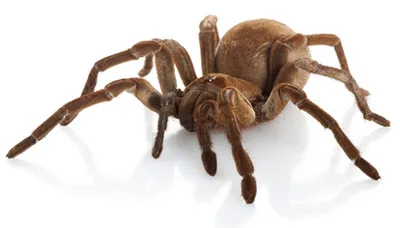
Allow the tarantula time to recover and for its new exoskeleton to harden fully. Avoid handling the tarantula for several weeks. The exoskeleton will still be very soft, so handling the tarantula could cause it damage. The tarantula will be more sensitive to its surroundings. Provide a stable environment with appropriate humidity and temperature. Observe the tarantula’s behavior for any signs of stress or discomfort. Patience is key during this period. It allows the tarantula to adjust to its new exoskeleton. Monitor the tarantula’s activity levels and be patient.
Common Molting Problems
While molting is a natural process, complications can occur. It is essential to be aware of potential problems and know how to respond. Not all molts go smoothly, and sometimes the tarantula may experience difficulties. Recognizing these problems can help you take appropriate measures. Prevention is the best strategy, and providing the correct environment can prevent problems. Be calm if problems arise, and take the following steps. You should not panic if problems arise, as most problems are not life threatening. If you are not able to resolve the problem, contact a professional.
Failed Molts
Sometimes, a tarantula may have difficulty molting and get stuck in its old exoskeleton. This can be caused by a variety of factors, including low humidity, health problems, or an unsuitable environment. If a tarantula gets stuck, it’s crucial to address the issue promptly. Contact an experienced keeper or a veterinarian specializing in arachnids for advice. Do not attempt to remove the old exoskeleton yourself, as you could cause serious damage. If a failed molt is diagnosed, follow the professional’s advice. In some cases, the tarantula may be able to recover with assistance. It is possible that your Goliath Bird Eater will have a failed molt at some point. If you are concerned, contact a professional.
Drying Out
A tarantula can dry out during molting. This occurs when the environment is too dry. The old exoskeleton can dry out and split prematurely, making it difficult for the tarantula to extract itself. Maintaining proper humidity is essential to prevent this. If the tarantula appears to be drying out, increase the humidity in the enclosure by misting more frequently or adding a larger water dish. Observe the tarantula closely and provide a suitable environment. Contact a professional immediately if this happens, if it does not get better immediately. This is a serious problem, and the Goliath Bird Eater can easily perish.
Conclusion
Molting is an essential part of the life cycle of a Goliath Bird Eater tarantula. Understanding the molting process, preparing the environment, and providing appropriate post-molt care are crucial for ensuring your pet’s health and well-being. By following this guide, you can confidently support your Goliath Bird Eater through each molt, allowing it to grow and thrive. Remember to observe, be patient, and always prioritize the tarantula’s safety. With proper care, your Goliath Bird Eater can live a long and healthy life, delighting you with its beauty and fascinating behaviors. The molting process is a unique experience. Be patient and provide proper care, and enjoy the experience.
